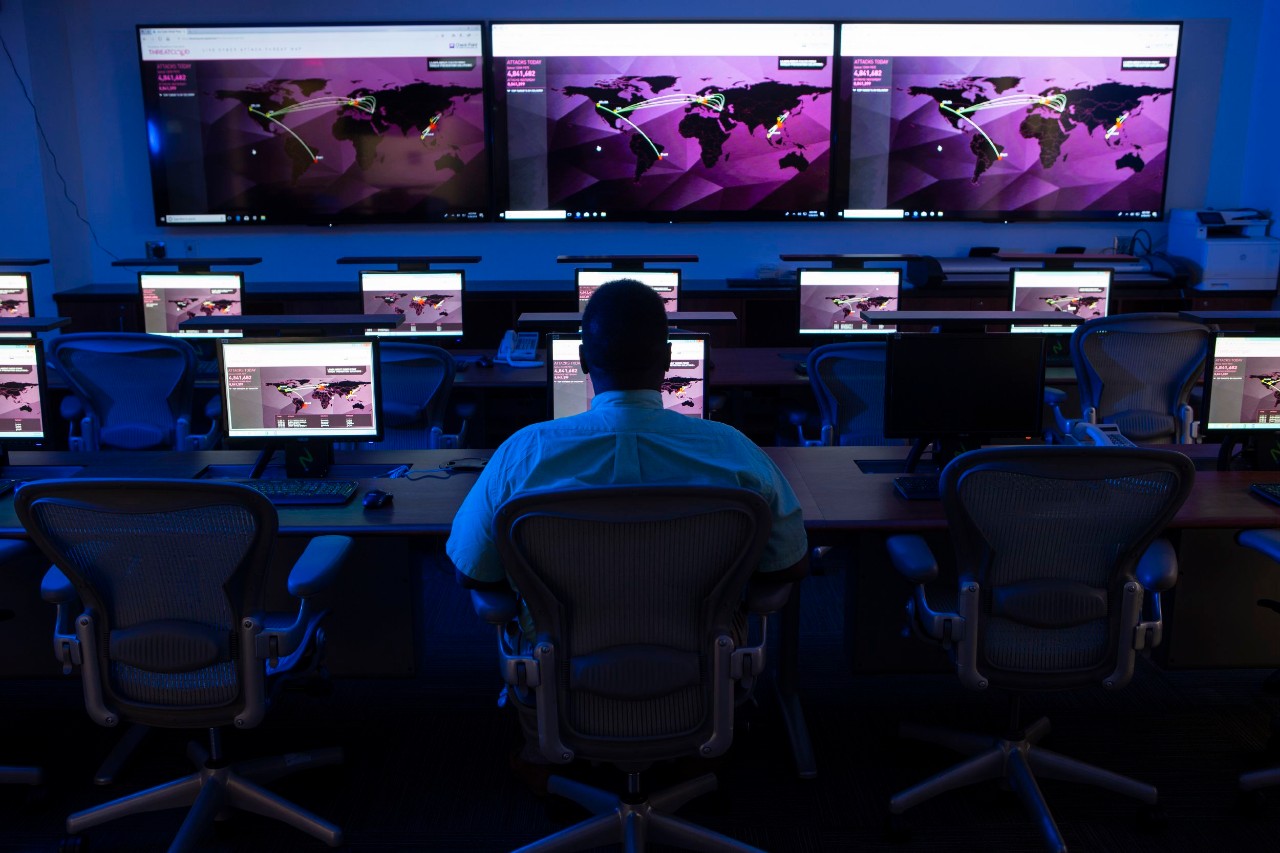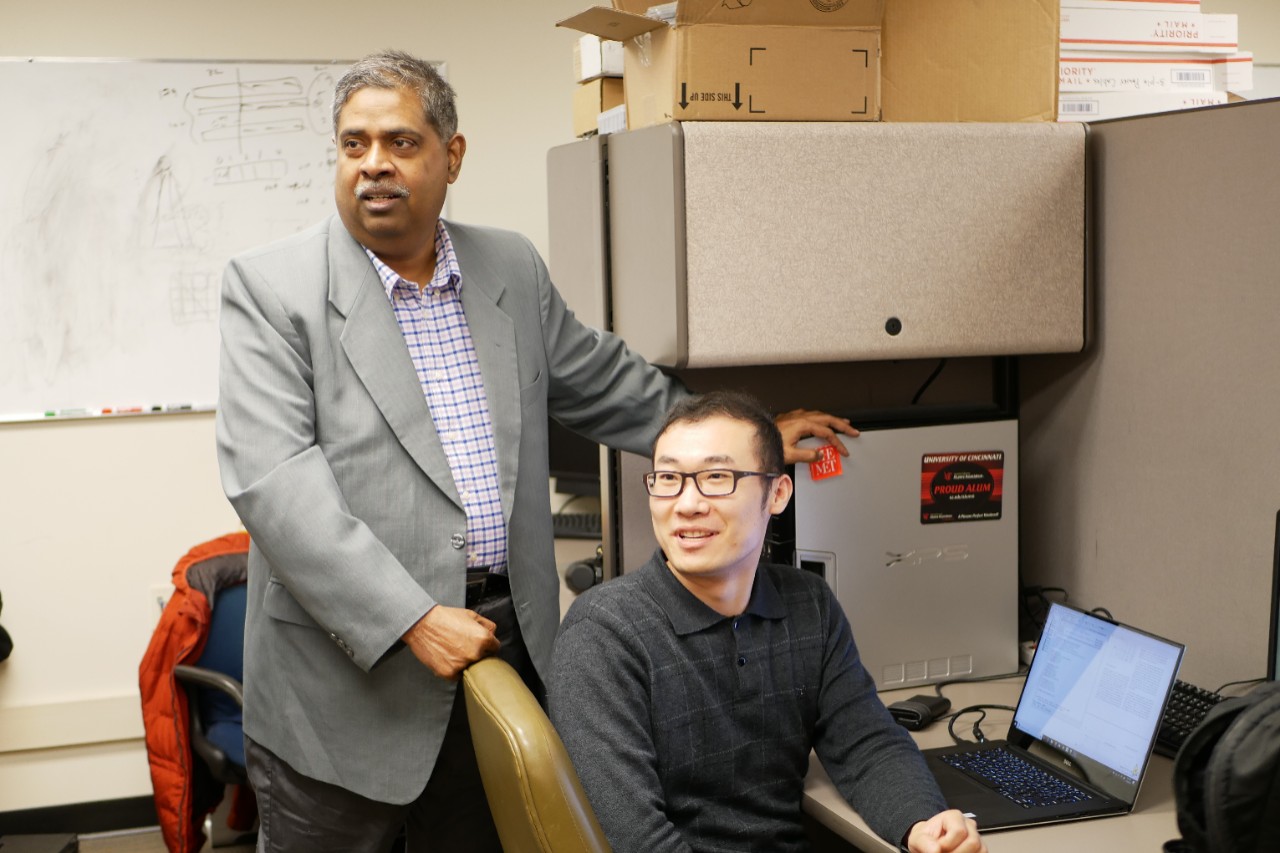
Intel's Ohio plants promise opportunity for UC
Microchip maker already draws heavily on UC grads in engineering and physics
Intel Corp. announced on Friday it will open two new semiconductor fabrication plants outside Columbus as part of an estimated $20 billion investment in Ohio.
The three-year construction project represents the biggest private investment in the history of the state, offering the promise of new high-tech jobs for thousands of residents, including many graduates of the University of Cincinnati.
“I see this potentially being the beginning of a new Silicon Valley. This could anchor a lot of high-tech industry in Ohio,” said Ranga Vemuri, a professor of electrical and computer engineering in UC’s College of Engineering and Applied Science.
The new plant holds the promise of creating more jobs for UC graduates in a global company that is already a longtime UC co-op partner.
Vemuri said a majority of his 130 master’s and doctoral students over the years has gone on to work for Intel at its design centers in Arizona, Oregon and Massachusetts and its headquarters in Santa Clara, California. In addition, Intel recruited graduates from various programs in UC engineering. In fact, Vinod Dham, known as “the father of the Intel Pentium processor,” is a UC graduate.
UC physics graduates, too, have deep connections to Silicon Valley. At least six recent physics master’s or doctoral graduates now work for Intel, Department Head Leigh Smith said.
“This is a huge announcement for Ohio,” Smith said. “We train both undergraduate and graduate students to analyze engineering and scientific problems broadly and mathematically. This training can be incredibly important to semiconductor manufacturing.”

UC College of Engineering and Applied Science professor Ranga Vemuri said many of his students go on to careers at Intel and other high-tech companies. Photo/Provided
Two new fabrication plants will need ancillary support services that will create a new high-tech cottage industry in Ohio. A majority of physics graduates pursue careers in high-tech industries where they are in high demand, Smith said.
“I am absolutely certain UC will benefit from this,” Smith said. “It provides a natural mechanism to place students at both the undergraduate and graduate level at a world-class facility. No question, there will be many research and employment opportunities.”
Intel announced its plans in an exclusive interview with Time magazine. According to the magazine, construction will begin this year with production beginning as early as 2025.
“Our expectation is that this becomes the largest silicon manufacturing location on the planet,” Intel CEO Pat Gelsinger told Time.
The new fabrication plants will employ an estimated 3,000 people. But UC’s Vemuri said new high-tech jobs often have a tenfold economic impact in industries such as retail, service and real estate.
Computer chips are everywhere in every appliance or gadget: your smart watch, your phone — even your refrigerator.
Ranga Vemuri, Professor in UC's College of Engineering and Applied Science
The investment could help the United States meet increasing demand for computer chips, spurred by advancements in technology.
“Computer chips are everywhere in every appliance or gadget: your smart watch, your phone — even your refrigerator,” Vemuri said. “One of the largest consumers of chips is the automobile industry. Some cars have as many as 50 to 70 processors. Electronics account for 40 to 50% of the cost of some cars.”
A shortage of chips, caused in part by supply-chain issues from the COVID-19 pandemic, has slowed production for many automakers.
But the new plants won’t merely boost the number of microchips but also the technology they contain. Future generations of microprocessors will be smaller, faster and more efficient than ever before, Vemuri said.
A generation ago, a typical chip might have contained a million transistors. Today, the same chip holds billions of transistors requiring the same or less power, he said. And now Intel is talking about microelectronics even smaller than a nanometer that it calls “the Angstrom era.”
“Just by that word it tells me that they are thinking of atomic-level fabrication,” Vemuri said. “If you said that 20 years ago, it would have been unfathomable — science fiction, right?
“What is clear to me is these plants will produce chips using future technologies,” he said.
UC’s research expertise spans the spectrum of topics that semiconductor companies like Intel are interested in, including novel materials and devices, circuit and system design, electronic design automation and test methodologies.
New fabrication plants in the United States also will improve security in the computer chip supply chain, Vemuri said. He is co-author of the 2021 book “Split Manufacturing of Integrated Circuits for Hardware Security and Trust,” which examined semiconductor security issues facing government and industry.
“One of the risks of producing chips offshore is that malicious actors can add something to the chip that is so tiny — we’re talking about a few transistors’ worth of change in a chip that might contain multiple billions — that they’re hard to detect,” Vemuri said.
The risks include corporate espionage, cyberterrorism or even cyberwarfare. According to Bloomberg News, China allegedly infiltrated the computer chip supply chain in recent years to hack U.S. companies.
“Hardware hacks are more difficult to pull off and potentially more devastating, promising the kind of long-term, stealth access that spy agencies are willing to invest millions of dollars and many years to get,” Bloomberg reported.
UC teaches and conducts research in hardware security, counterfeit detection, anti-tampering and integrated-circuit authentication through its National Science Foundation-funded Center for Hardware and Embedded Systems Security and Trust. It recently expanded its course offerings to undergraduates.
Since microprocessors are vulnerable at every stage of design, manufacture, assembly and packaging, UC has come up with a robust security program to address potential weaknesses.
Likewise, counterfeit computer chips — often chips that are recycled and pawned off as new — are a $75 billion industry made worse by the global shortage of chips during the pandemic. Knowing how to spot a counterfeit can save electronics manufacturers untold costs in warranties and product reliability.
“I totally expect some of the research we have been doing to find its way into commercial products,” Vemuri said.
Featured image at top: UC expects to play a big role in Intel's next two fabrication plants in Columbus. Photo/Andrew Higely/UC Creative + Brand
Next Lives Here
The University of Cincinnati is classified as a Research 1 institution by the Carnegie Commission and is ranked in the National Science Foundation's Top-35 public research universities. UC's medical, graduate and undergraduate students and faculty investigate problems and innovate solutions with real-world impact. Next Lives Here.
Related Stories
UC‘s College of Arts and Sciences taps innovative new leadership
December 20, 2023
The College of Arts and Sciences announced Ryan J. White and Rina Williams as the newest divisional deans of Natural Sciences and Social Sciences. White and Kennedy’s inclusion will bring new focuses and structure around student success and the college of Arts and Sciences’ advancement. Both will officially begin their new terms on Jan. 1, 2024.
UC to celebrate grand opening of Clifton Court Hall
Event: September 19, 2023 3:00 PM
The University of Cincinnati on Sept. 19 will celebrate the grand opening of Clifton Court Hall, the biggest classroom building on UC’s Uptown campus.
What is UC’s 4 + 1 program?
December 4, 2023
You may be a UC student thinking about taking your education to the next level — UC’s College of Arts and Sciences has a pathway to help you do just that. A&S has no fewer than 15 five-year programs — from biological sciences to Spanish to psychology — where you can earn both your bachelor’s and master’s degrees in just five years, versus the traditional six-year track. The Bachelors and Master’s 4 + 1 Program is designed to increase your marketability and deepen your understanding of the subject matter. And in an increasingly competitive job market, you may want to investigate an additional year of study.
